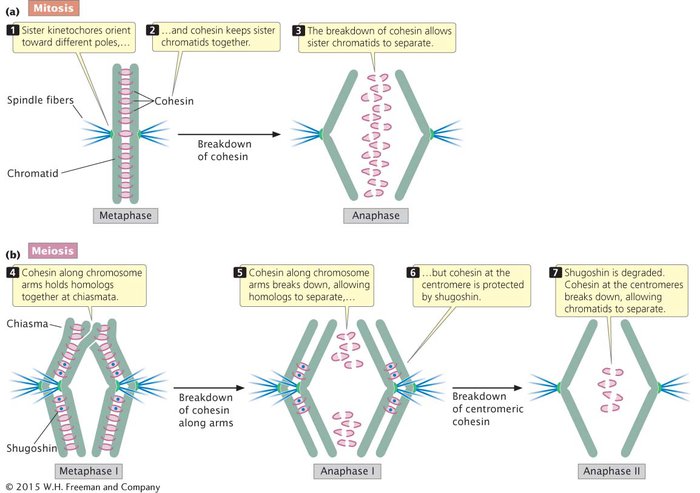The Separation of Sister Chromatids and Homologous Chromosomes
In recent years, some of the molecules required for the joining and separation of chromatids and homologous chromosomes have been identified. Cohesin, a protein that holds chromatids together, is key to the behavior of chromosomes in mitosis and meiosis (Figure 2.16). The sister chromatids are held together by cohesin, which is established in the S phase and persists through G2 and early mitosis. In anaphase of mitosis, cohesin along the entire length of the chromosome is broken down by an enzyme called separase, allowing the sister chromatids to separate.

In anaphase I of meiosis, cohesin along the chromosome arms is broken, allowing the two homologs to separate (see Figure 2.16b). However, cohesin at the centromere is protected by a protein called shugoshin, which means “guardian spirit” in Japanese. Because of this protective action by shugoshin, the centromeric cohesin remains intact and prevents the separation of the two sister chromatids during anaphase I. Shugoshin is subsequently degraded. At the end of metaphase II, the centromeric cohesin—